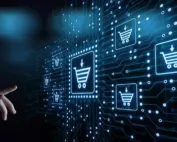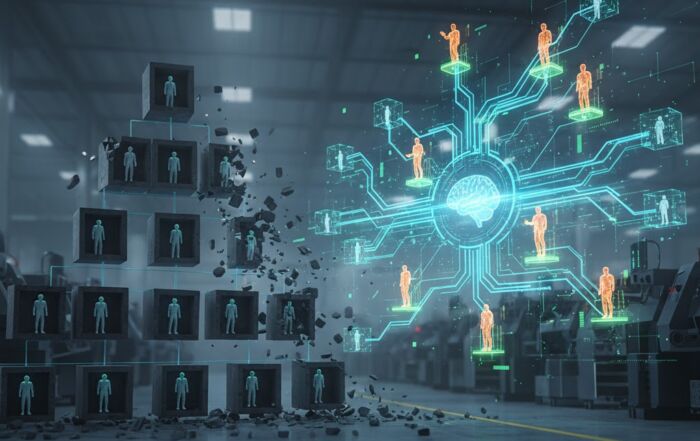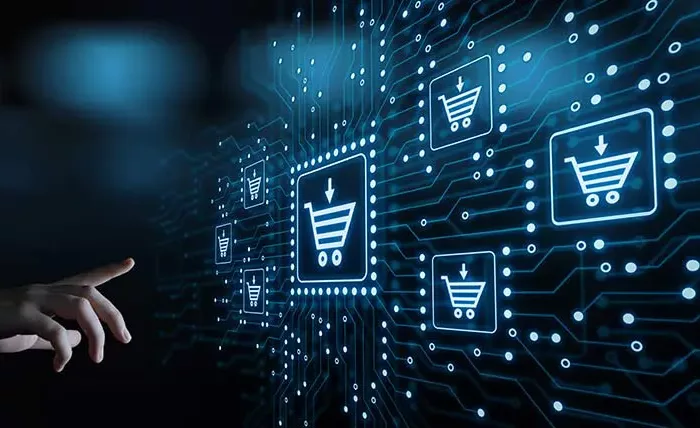Share
Author
George Anderson
Share
In their latest B2B Buyer Report, Avionos examined new preferences that B2B buyers are showing in the wake of the pandemic. The company surveyed 150 buyers across several industries, including manufacturing and consumer packaged goods.
The needs of today’s B2B buyers aren’t too surprising, given the massive shift to self-service that’s happened in the last few years. But where do you start in shifting customer interaction to an SAP customer portal solution? What are the most foundational needs of B2B buyers?
In this article, we’ll unpack three findings from the Avionos report (and what they mean for manufacturers).
90% of buyers will switch suppliers if a B2B portal isn’t meeting their needs
That’s a startling fact — but manufacturers shouldn’t be too surprised. This number is up from 88% in 2020, and it fits trends in B2B buyer expectations that we’ve followed for years. COVID-19 accelerated the shift to self-service, but you could also say it only exposed the needs that B2B buyers already had.
So what are those needs?
For manufacturers’ customers, real-time, personalized data is the most essential component to the B2B portal experience. Without it, buyers don’t have the information they need to make purchase decisions.
This leads us to our next point.
153% increase in buyers struggling to find up-to-date information in supplier portals
When asked what causes the most trouble in researching purchases, 48% of respondents said the main challenge is finding product and service information that’s not out of date.
That number is up from 19% in 2020 — a 153% increase.
It’s clear the pandemic has increased B2B buyers’ demands for self-service.
It’s also clear that if a B2B portal is going to work for manufacturers’ customers, it has to provide everything they need to research products, make purchases and manage their accounts online. Whatever they previously did over the phone or email — whether with a sales rep or customer service — buyers need those same capabilities in a digital portal.
In most cases, that means the portal needs comprehensive, real-time integration to SAP ERP. This is the only way to give customers the same access to SAP data and logic that they would get through a customer service representative.
Here’s the functionality that manufacturers’ customers need most in a portal.
Real-time SAP integration in the research and purchasing phase
- Accurate, up-to-the minute inventory information
- Accurate contract pricing for every material that the buyer is allowed to order
- Accurate, up-to-the minute credit status (so they know if their order will go on credit block)
- SKU purchasing permissions enforced from SAP
- Intelligent error messaging from SAP to let the user know they need to fix their order
Real-time SAP integration in the post-order phase (for account management)
- Accurate order status and history
- Real-time shipment status
- Self-service invoice payments (with real-time account clearing in SAP)
Why do B2B buyers need this information?
Because they’re not talking to sales like they used to (which leads us to our next point).
57% decrease in buyers turning to sales reps to initiate a purchase
How do B2B buyers prefer to start a purchasing cycle?
In 2020, 21% of Avionos’ respondents chose “direct contact with sales rep or supplier.” In 2021, that number is down to 9% — a 57% decrease.
This stat should come as no surprise. COVID-19 disrupted B2B transactions, particularly those that depended on direct interaction with a sales rep. We’re still living in that “new normal” when it comes to B2B transactions.
But this trend was already in motion before the pandemic. COVID-19 only intensified the market’s shift toward self-service.
Of course, this trend means different things in different industries. For example, a million-dollar industrial machine isn’t a great candidate for one-click online purchasing. However, even businesses with complex sales cycles should ask their customers which tasks in the buyer journey, if any, would be easier in a self-service portal.
In this regard, manufacturers should look for any stage in that journey where they can remove friction and make themselves “easier to do business with.” Ultimately, that’s what B2B buyers want — a seamless interaction that makes life easier, not harder.
Want to see deep SAP integration in B2B eCommerce?
Check out the Corevist Commerce demo video.
Real-time SAP data in a sleek, mobile-friendly UI that’s built for B2B use cases.










